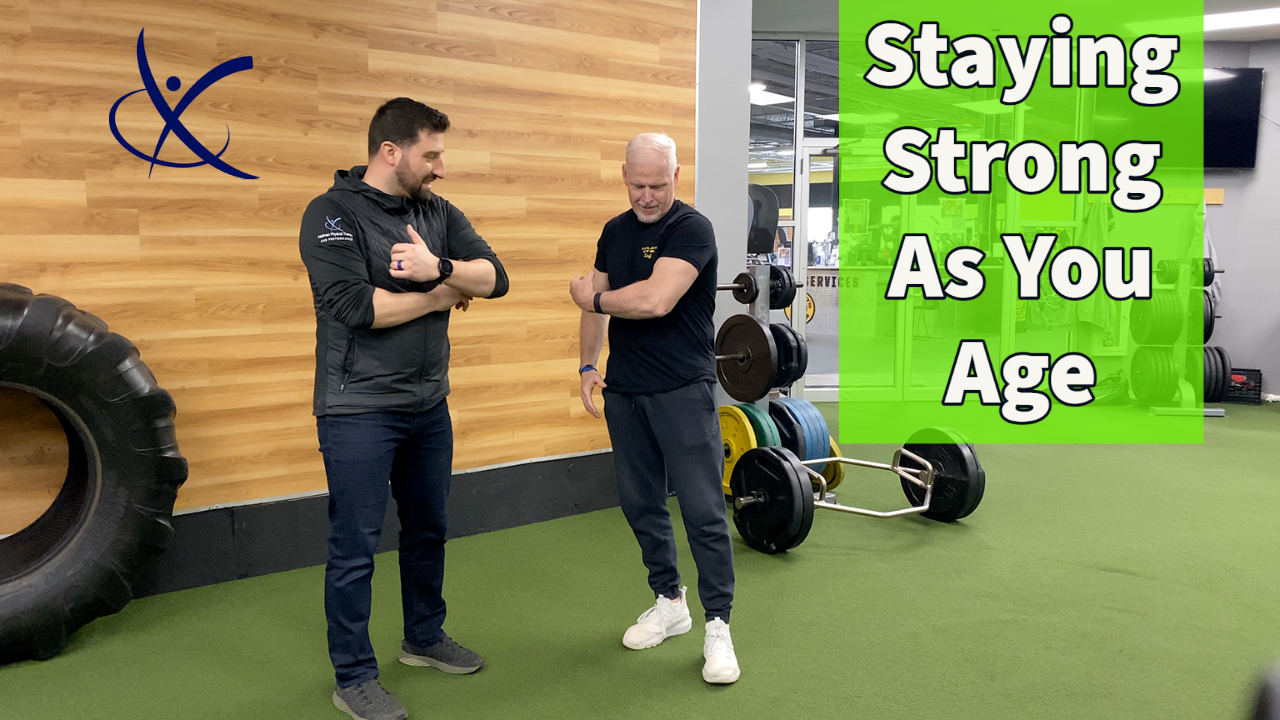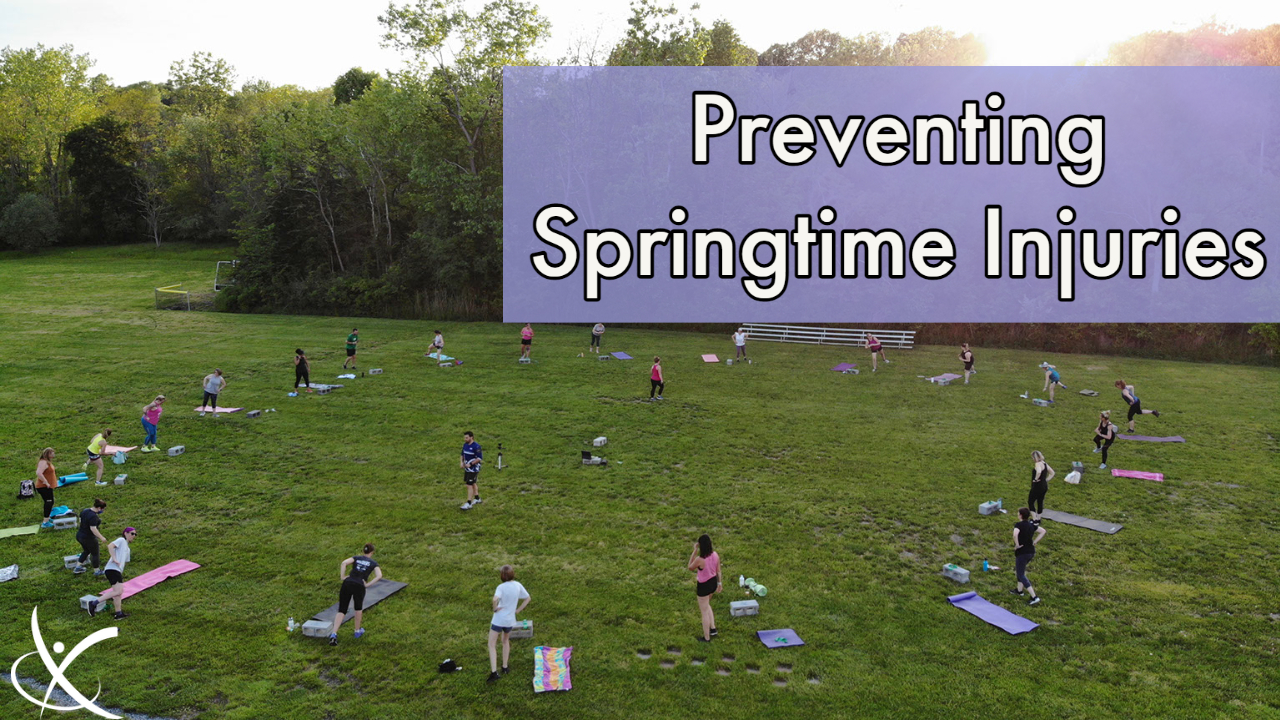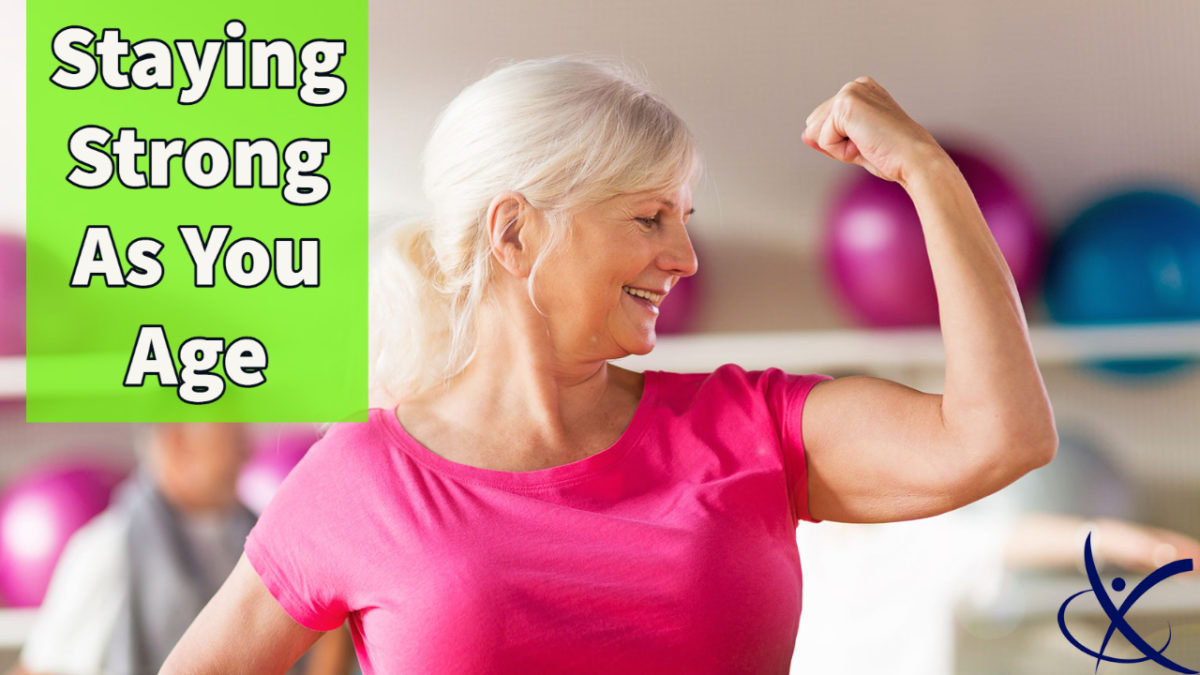
Why We Need More Strength Training as We Age
April 30, 2022
Tips for Preventing Springtime Injuries
May 15, 2022Recommendations for Staying Strong as You Age
Uh oh, dear Grandma Sally fell and fractured her hip.
Say it ain’t so.
How many of you have been in this scenario?
I sure have.
When I was 12, I remember my mom calling to tell me that my eighty-something-year-old grandfather fell and fractured his hip. Now, from what I know my grandfather was one heck of a firefighter in his youth. He was an agile, active, working man. He raised 9 trouble-making kids for heaven’s sake. However, just like many older adults, he experienced what I like to call “Recliner Syndrome”. Retirement hit and dear old Grandpa Paul decided to sit in that recliner, watch TV, smoke cigars, and drink some robust Manhattans.
If I take a direct quote from John’s latest blog, he hits the nail on the head.
“While many conventional notions tell us to move less and “take it easy” as we get older, we really need to do the opposite. Our musculoskeletal system requires consistent movement to maintain proper health and function. When we stop moving, we lose capacity.”
The Infamous John Nunez, PT, DPT
Did you know that 1 in 4 adults over the age of 65 experience a fall each year?(1) Also, approximately 37% of the falls that occur over the age of 65 result in injury?(1) In the United States alone, close to 51 billion dollars are spent on repercussions from falls each year and the number is only increasing as our population ages.(1)
If I dig through the archives, I’ve written and spoken about aging in the past. I’ve discussed why many people begin having more aches and pains as they age. I’ve written about “Retirement Syndrome” when people’s aches and pains begin to worsen as their lives become more dormant. I’ve discussed fall risk and how practicing balance is important. So, yes, I’ve stressed the importance of movement before, but WHY is it so important?
I’m sure that your eyes have skimmed articles about aging with words such as Sarcopenia, Muscle-Wasting, Generalized deconditioning, Fall-Risk, Osteopenia and Osteoporosis. Now, if you’ve never heard these terms before, here is a little more insight:
- Sarcopenia: Age-related loss of muscle mass and function. Occurs in 5-13% of elderly 60-70 years old.(1)
- Muscle-Wasting: A decrease or shrinking of muscle mass related to disuse.
- Generalized deconditioning: The loss of physical abilities resulting from impairments of muscle strength, bone health or psychological well-being.
- Fall-Risk: An individual with an increased risk of falls.
- Osteopenia: A loss of bone mineral density or worsening bone health. This is the precursor to Osteoporosis. This affects ~44% of all individuals over the age of 65.(3)
- Osteoporosis: A condition that causes bones to become brittle and significantly increases fracture risk. This occurs in men and women of any age and is noted in ~13% of all adults over the age of 65 in the United States.(3)
Every day, older adults in the United States find out that they’re experiencing one, or all of these. Many times, it is during a hospital visit secondary to something such as a fall. So what should we do about it?
Educate.
Loss of muscle mass increases the risk for falls, deconditioning, and fractures secondary to osteoporosis. Individuals over the age of 70 will lose approximately 3% of their muscle mass per year(2). That is unless we do something about it.
Research (and John) have noted that strength training throughout the lifespan and during your golden years can have a prophylactic effect on muscle and bone health. What one must remember is that in order to improve your bone and muscle strength, you must subject your body to loads exceeding those performed daily.
So, what are our recommendations?
To decrease your risk for all of the above, strength training 2-3 times per week is recommended. It should not be easy. A properly designed program should include several exercises for 2-3 sets that challenge you! If you’re not sure where to start, find someone who can help! Don’t wait!
For any individual experiencing osteopenia or osteoporosis, walking is not enough load on your bones to make a difference. Performing resistance exercises with 4-10% of your body weight has shown to stabilize and prevent further bone loss. If tolerated, we often recommend the utilization of a weighted vest during walking on top of a strength regime.
KEEP MOVING AS YOU AGE. Lack of movement causes a lack of capacity. Research shows that not only does moving help with physical capacity but also improves the psychological well-being of older adults.
I loved John’s analogy that life is not a single-story ranch house without throw rugs. We must remember we do not live in a controlled environment! Just as we’ve always been told, practice makes perfect. As we age, we can prevent breakdown and even improve function simply with practice. Strength and muscle mass, balance, fall risk, and bone health are all things that can improve!
Here’s to Healthy & Happy Aging.
-Dr. Ashley
-
Older Adults Fall Prevention. Centers for Disease Control and Prevention. CDC website. June 9, 2020. Accessed April 6, 2022. https://www.cdc.gov/falls/data/falls-by-state.html
-
An overview of sarcopenia: facts and numbers on prevalence and clinical impact. J Cachexia Sarcopenia Muscle. 2010;1(2):129-133. doi:10.1007/s13539-010-0014-2
-
Padilla Colón CJ, Molina-Vicenty IL, Frontera-Rodríguez M, et al. Muscle and Bone Mass Loss in the Elderly Population: Advances in diagnosis and treatment. J Biomed (Syd). 2018;3:40-49. doi:10.7150/jbm.23390





